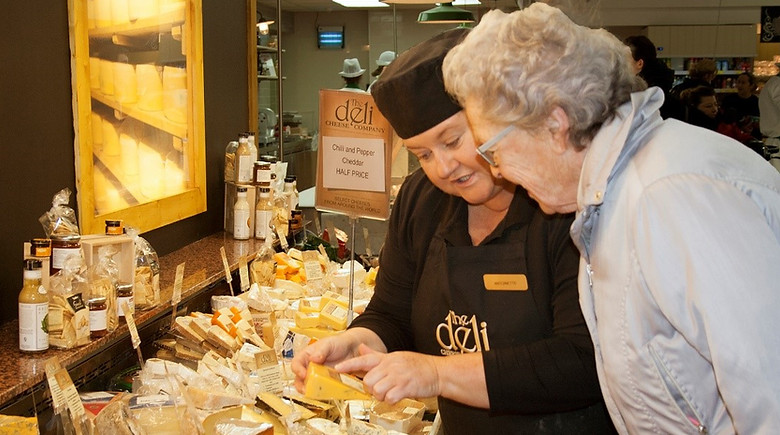

Selecting Cheese

Use your senses when selecting cheese with appearance, aroma, taste and flavour all playing a role. Taste all cheese at room temperature except for fresh cheeses such as creamy goats cheese, soft mozzarella or crumbly feta, which should be cold.
Appearance
The appearance of cheese can be described as soft, hard, moist, dry, smooth, rough or crumbly. The colour can vary amongst different cheeses - a pale white, ivory, buttery, golden or blue streaked.
Aroma
Many factors can affect the aroma of cheese including the animal feed, production process and age. The aroma of cheese can be described as mild, delicate, milky, salty, sweet, strong, pungent, earthy, mouldy.
Taste
This is the effect the cheese has on taste buds and can be sweet, sour, bitter, salty, savoury or an element of any of these tastes e.g. delicate, sharp, tart, tangy, smoky, bitter, nutty.
Flavour
The flavour of cheese is the combination of aroma and taste. The aroma and taste elements that develop when eating cheese are used to describe its flavour.
Storing Cheese

-
Keep cheese in its own box in a fridge
-
Wrap hard and semi-hard cheese in wax paper or plastic wrap to keep it fresh
-
Long term storage in plastic wrap will lead cheese to suffocation and cause spoilage
-
Leave the hard rind of cheeses such as Parmigiano-Reggiano open to allow it to breath and cover the exposed area with plastic wrap
-
Semi-soft cheese should be wrapped in wax paper, then wrapped in plastic wrap.
-
Wrap blue cheese tightly in foil and then plastic wrap. Store it in a separate box in the fridge as it can interfere with the taste of other cheeses and the mould may spread
Preparing a Cheeseboard

Select your cheese for the occasion and the people. As an appetiser, a desert or on its own, the cheese for a board can be presented in many ways.
When selecting cheese for a cheeseboard there are a number of formats to use:
-
Three to five different cheeses from different categories – hard, soft or semi-soft, blue, speciality flavoured, goats and washed rind
-
Cheese from different countries – eg one cheese each from Ireland, England, France and Italy
-
Cheeses of the same type – eg three semi-soft
-
Cheeses of different milk types – cow’s milk cheese, sheep’s milk cheese and goat’s milk cheese
-
One single large wedge or a whole or half large wheel.
See our information leaflet on Preparing a Cheeseboard for further guidance and suggestions.